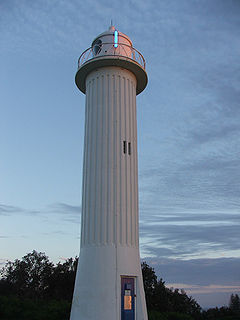Gija, also spelt Gidja and Kija, alternatively known as the Lungga, refers to Aboriginal Australians from the East Kimberley area of Western Australia, about 200 km south of Kununurra. In the late 19th century pastoralists were fiercely resisted by Gija people, many of whom now live around localities such as Halls Creek and Warmun.

Northern Rivers is the most north-easterly region of the Australian state of New South Wales, located between 590 kilometres (370 mi) and 820 kilometres (510 mi) north of the state capital, Sydney, and encompasses the catchments and fertile valleys of the Clarence, Richmond and Tweed rivers. It extends from Tweed Heads in the north to the southern extent of the Clarence river catchment which lies between Grafton and Coffs Harbour, and includes the main towns of Tweed Heads, Byron Bay, Ballina, Kyogle, Lismore, Casino and Grafton. At its most northern point, the region is 102 kilometres (63 mi) south south–east of the Queensland capital, Brisbane.

The Wonnarua people, otherwise written Wanarruwa, are a group of indigenous people of Australia united by strong ties of kinship, and who survived in family groups or clans scattered along the inland area of what is now known as the Upper Hunter Valley, New South Wales, Australia. Their creation spirit is Baiami, also known as Koin, the creator of all things and the Keeper of the Valley.

The Eora (Yura) are an indigenous Australian people of New South Wales. Eora is the name given by the earliest settlers to a group of indigenous people belonging to the clans along the coastal area of what is now known as the Sydney basin, in New South Wales, Australia. Contact with the first white settlement's bridgehead into Australia quickly devastated much of the population through epidemics of smallpox and other diseases. Their descendants live on, though their languages, social system, way of life and traditions are mostly lost.

Yamba is a suburb in northern New South Wales, Australia at the mouth of the Clarence River. The first European to visit the area was Matthew Flinders, who stopped by in Yamba Bay for six days in July 1799.

The Djagaraga or Gudang are an Australian Aboriginal tribe, traditionally lived in the coastal area from Cape York to Fly point, including also Pabaju, in the Cape York Peninsula, Queensland. In the early period of white settlement as the Somerset tribe, after the settlement of Somerset established on their lands in 1863.
The Gidabal, also known as Kitabal and Githabul, are an indigenous Australian tribe of southern Queensland, who inhabited an area in south-east Queensland and north-east New South Wales, now within the Southern Downs, Tenterfield and Kyogle Local Government regions.

The Kureinji, otherwise known as the Keramin, are an Aboriginal group whose traditional lands are located in the Northern Riverina of southwest New South Wales, Australia.
The Anēwan, also written Anaiwan/Anaywan, are the traditional owners of the land around Armidale and the New England tableland in New South Wales.
The Ngaku were an Australian Aboriginal tribe located around the Macleay River of New South Wales. They were a predominantly coastal people.
Although their language was not recorded, it was described as a dialect or accent of Dhanggati.
The Ngamba were an Australian Aboriginal tribe who traditionally lived in around the area of Southern Gumbaynggirr, from the Nambucca to the Macleay in New South Wales.
The Yadhaykenu, otherwise known as the Jathaikana or Yadhaigana, are an Australian aboriginal tribe of northern Queensland.
The Naualko (Nhaawuparlku) were an indigenous Australian people of New South Wales.
The Geynyon, also written Keinjan, are an indigenous Australian people of southern Queensland.
The Kwiambal were an indigenous Australian people of New South Wales.
The Nggamadi were an indigenous Australian people of the Cape York Peninsula of northern Queensland.
The Minyungbal, also written Minjungbal, are an indigenous Australian people of New South Wales who speak the Minyungbal language.
The Wanjiwalku were an indigenous Australian people of the state of New South Wales.
The Wandjira were an indigenous Australian people of the Northern Territory.









